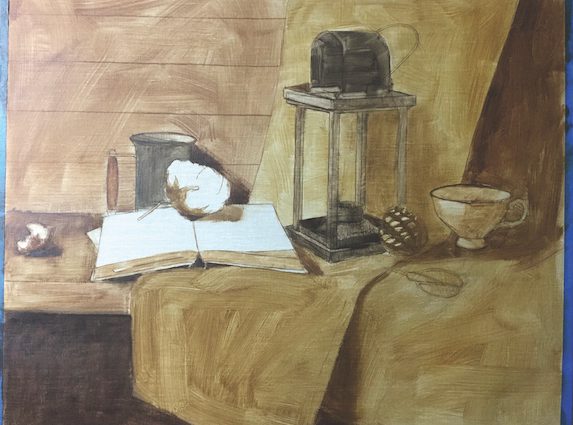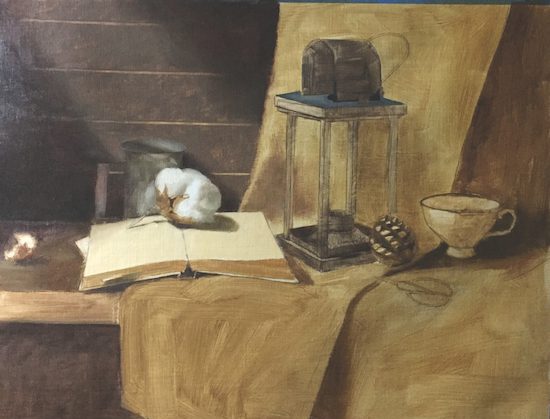
Fine artists at the summer festivals turn raw materials and blank canvases into stunning masterpieces.
By Ashley Probst
Renowned for its summer art festivals, Laguna Beach serves as a stage for every type of artist under the California sun. Being a part of these shows requires years of practice and dedication to one’s craft, and there’s a lot that goes on behind the scenes. No matter the medium, each artist has their own creative process.
While some artists start with a sketch that turns into a vibrant painting, others transform photos into 3D sculptures or raw stones into intricate jewelry—and many rely on their intuition.
Each artist’s process leads to unique pieces, and it’s fascinating to watch them take form. Here, we offer a glimpse into the studios of one artist from each local art festival to learn more about their creative path from inspiration and concept to finished work.
Beau Donnan
After spending his formative years in Laguna Beach, where his family has resided for more than 50 years, Beau Donnan later returned to the seaside city and lives here with his wife and daughter. “My daughter’s even going to the same schools that I went to, now, … and she plays on the same tree that I did when I was little,” he says of the full-circle moment.
An exhibiting artist at Sawdust Art Festival in both summer and winter, Donnan melds his experience as a lapidary and blacksmith to bring his gemstone jewelry to life. He’s been making this wearable art as a full-time endeavor for about seven years.
“I am really inspired by the natural beauty of the Earth,” Donnan says, specifically pointing to minerals and crystalline structures. “… What the Earth can create is so much more beautiful than anything I could ever otherwise come up with.”
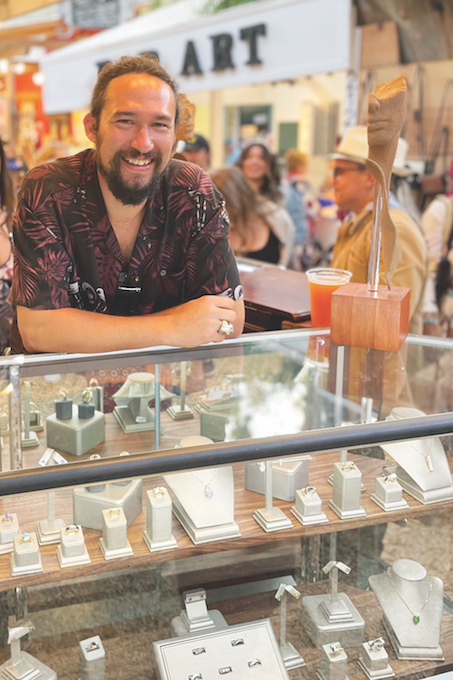
Donnan’s artistic process begins with the raw materials. He gravitates toward vibrant natural stones, such as turquoise, sugilite and lapis lazuli, as well as precious gemstones like rubies, sapphires and emeralds.
“The minerals I cut to shape to fit my design, and the gemstones I design around,” he explains, noting that the latter pieces come pre-cut.
For Donnan, coming up with the design is often intuitive. “Maybe I sketch it out or maybe I just kind of have an idea that I know I can execute and I start to freeform that,” he says.

His two main techniques are fabrication and lost-wax casting.
Fabrication requires turning metal into ingots (or bars) then hammering, bending and forging the metal, followed by soldering to connect the components and finishing off the piece by polishing it and setting a stone, if needed.
Casting involves carving a form out of wax, then creating a plaster mold around it and melting out the wax. Next, he pours hot metal into the plaster mold—where the wax was before—to make the jewelry. Then he finishes the piece, either setting a gemstone or cutting minerals to fit the setting.
Many of the pieces he procures are heirlooms that have been passed down from loved ones or other jewelers. Since he sources the highest-quality materials that he can, many of his creations are, by default, limited edition.

This also lends itself to one of the biggest challenges he faces working with this medium, which is the expense when something goes wrong.
“There are precious materials and they’re no joke. When you go to work with them, you have to be confident in your skills because there’s no forgiveness,” he says.
Donnan always sets stones on days that are filled with good energy, which goes on to be reflected in his exquisite jewelry.
Caryn Westcott
A newcomer to the art festival scene, the Laguna Art-A-Fair is Caryn Westcott’s first big show of her career and it’s one that drums up a bit of nostalgia.
“My mother was an art rep in the ’70s in Orange County, so I went to all of these shows all through my childhood,” she says, noting that her mother had a booth at Festival of Arts and possibly Laguna Art-A-Fair, as well. “… That’s why I wanted to do one in Laguna because I spent a lot of summer days at those shows.”
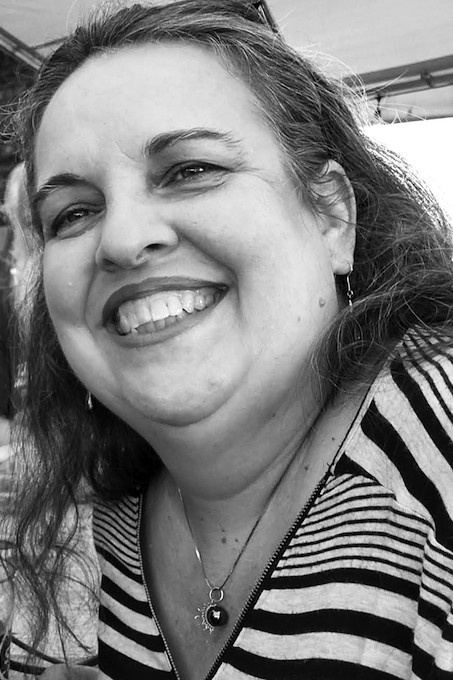
Today, this emerging artist handcrafts stained glass panels and sculptures as the owner of her business Glasspirations. Her first 3D pieces depicted a koi fish then a rainbow trout, and she is often inspired by animals and landscapes. “The subject matter gives me the inspiration,” she says.
Westcott creates custom pieces for her clients, so they often work together to conceptualize the project. Once the subject matter is decided upon, she conducts research by studying photographs that allow her to see it from various perspectives.
Most of her 3D work is freehand, such as the reefs in her aquatic pieces. For these aspects of her projects, all she uses are cutters and the glass.
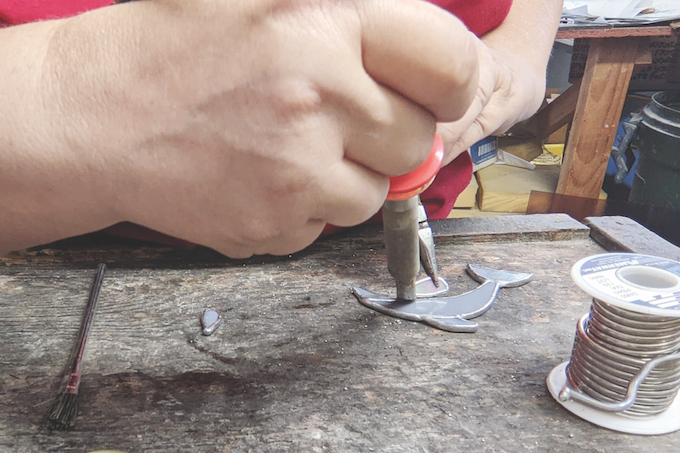
If the design requires a drawing, which is common for stained glass panels, she starts by tracing it onto a manila board. This stencil can then be used to trace the pattern onto the glass, or it can be attached onto the glass using a glue stick to be used as a template.
The glass pieces are cut into the desired shapes and then the edges are ground down a bit to give it some tooth so the copper foil that’s placed along the edges will stick better. This acts like adhesive tape and holds the sculpture together.
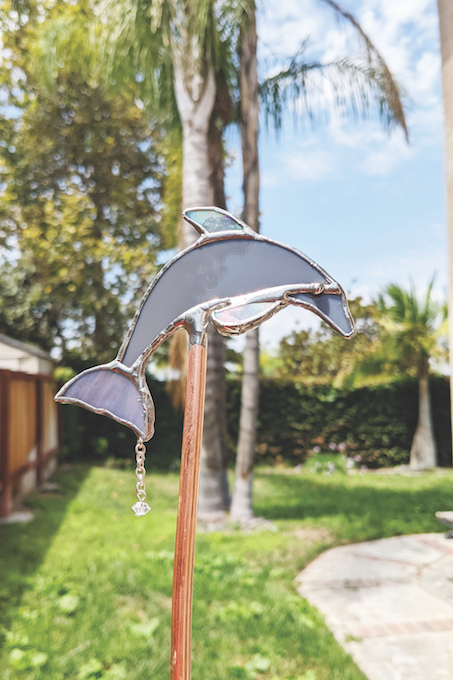
Putting the flat pieces together creates some dimension, like the fins on a fish or the mane and tail on a horse. “Separate pieces go in different directions to give it some movement,” she explains.
For Westcott, the most challenging aspect of her craft is also the most rewarding. “Soldering is a bit challenging, but it feels really good when you stop and see how good it looks,” she says.
Nan Luh
When Nan Luh was attending a community college, one of her course requirements was an oil painting class. Though she was studying fashion design, she fell in love with this new medium and decided to shift her focus.
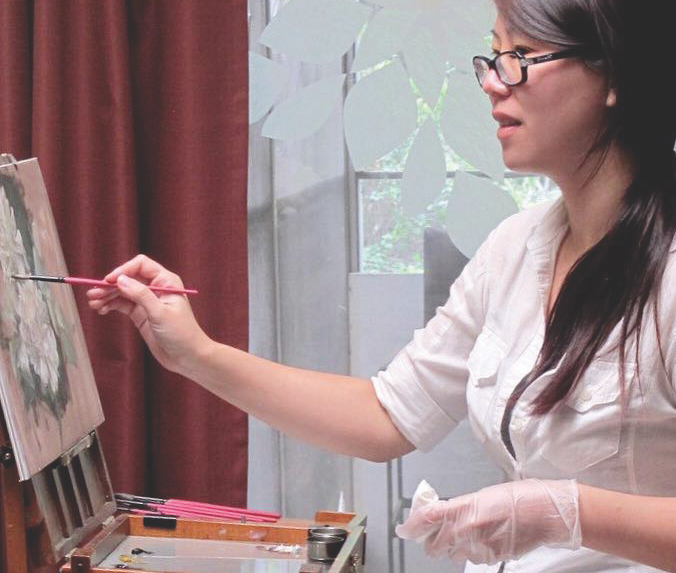
She transferred to Laguna College of Art & Design, and started attending the Festival of Arts almost every year. She wished she could be an exhibitor one day and, two years ago, that dream finally came to fruition when she was accepted into the juried show.
Her work has evolved significantly since she first started painting 20 years ago. “These days, I like to choose one color scheme and just focus on that instead of having various … bright colors in my paintings,” she says. “… The color works as an anchor.”
Her oil paintings are inspired by everything from nail polish colors to home decor she sees in the thrift store, and lighting is integral to the artistic process. She typically uses studio lighting as opposed to natural light that she can’t control. This allows her the freedom to create any lighting she wants and ensure it stays consistent while she works.
Sometimes it can take up to three weeks of adjustments before she is satisfied with the setup of her painting.
“Generally, I look for negative space or the silhouette of the setup. I like to keep it simple—the space,” she explains. “My older paintings are more complicated [and] the setup was more colorful. But it does change as I grow.”
For more complicated pieces, Luh will draw a rough sketch on the canvas using charcoal. Simpler pieces, like her florals, typically only require a quick sketch with a brush and can be finished in one sitting.

“I like to start with the shadow, add a little bit of color, any highlights,” she says. “… If I see there’s something [that] needs to be adjusted, sometimes I wait until it dries to add more detail so it doesn’t mess up the bottom layer of paint.”
This is what Luh enjoys most about this medium: It’s very forgiving when you make mistakes and also quite versatile, as it lends itself to all sorts of artistic interpretation.


